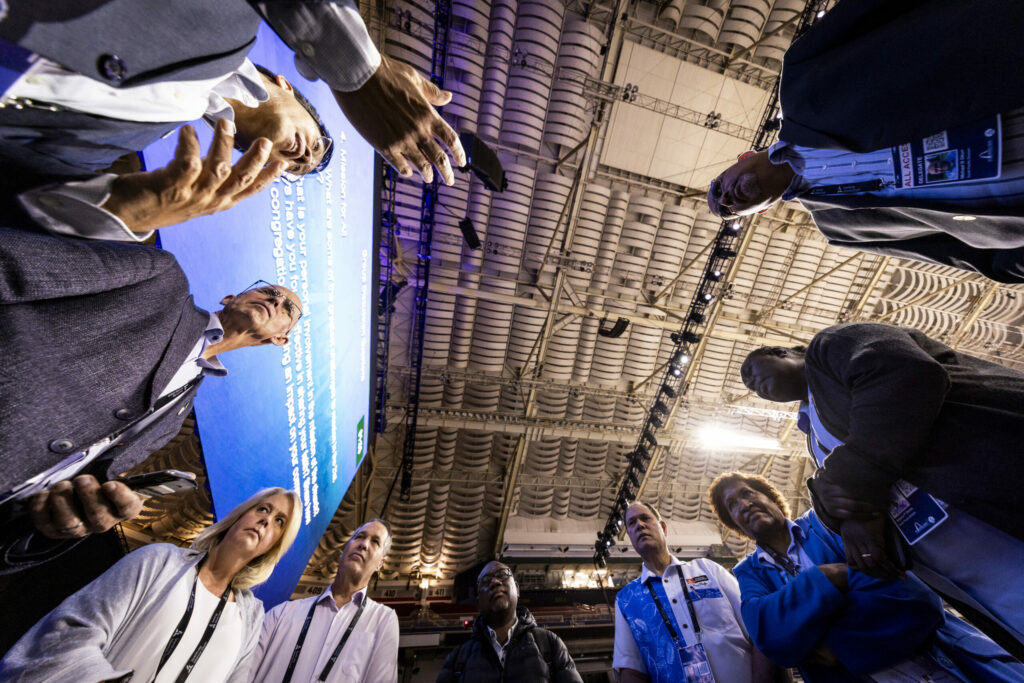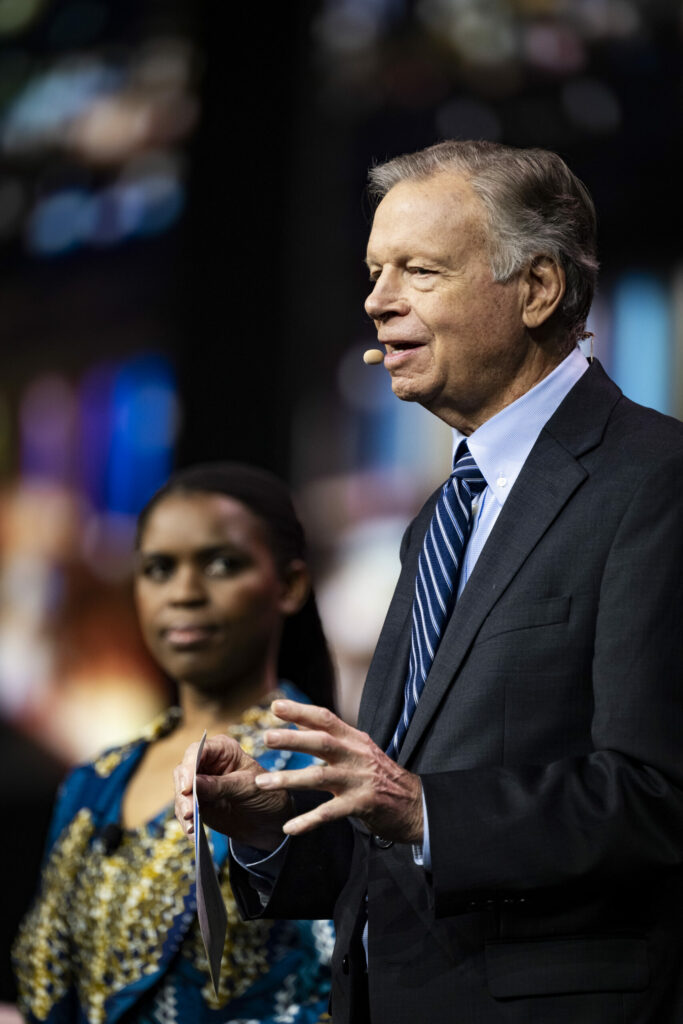Small Group Discussions Inspire Practical Mission
A significant amount of time during General onference (GC) Session was dedicated to the church’s four I Will Go (IWG) strategic pillars for the new quinquennium. The pillars are Communion With God, Identity in Christ, Unity in the Spirit, and Mission for All.
Across four two-hour blocks between Wednesday and Friday, delegates were asked to break into small groups to discuss, pray over, and talk about the practical implications of each of the pillars, with a process in place to provide feedback as well.
During the sessions a devotional message was presented by speakers from the Biblical Research Institute (BRI), Ellen G. White Estate, and Adventist Review, followed by the small group discussions.

Photo: Josef Kissinger
“The threefold purpose of these segments was to strengthen the I Will Go strategic focus pillars; to generate ideas for implementation in strategic planning; and to give the delegates a voice in the process,” said Sikhululekile Daco, Adventist Review associate editor, who cohosted the sessions with evangelist Mark Finley.
ChanMin Chung, director of Global Mission Centers, was instrumental in coordinating the program. “This may be the first time we’ve tried this kind of spiritual interaction as part of our business session. We believe that this is an important matter,” he said.
“GC leadership thought it a good idea and a good opportunity to foster that interaction among our delegates.”
Small Group Power
There were 280 small group leaders assigned for discussion on given topics. Each group leader was provided a large cardboard sign to hold up so others could find them. On the signs were four QR codes, where the group leader could scan in and convey each group’s discussion to the Office of Archives, Statistics, and Research, directed by David Trim, who will collate and convey the results to administration.
One of the small group leaders was Cheonneth Strickland, secretary of the Greater Sydney Conference, in Australia.
“The discussions gave the delegates time to meet as a team to discuss the strategic pillars of the GC. We enjoyed connecting with others from different missions or conferences. We shared ideas and experiences in how we do church.”
On Wednesday, July 9, in the morning session, the delegates focused on communion with God.
In the afternoon session they covered identity in Christ.

Photo: Josef Kissinger
“As Dwain Esmond [devotional speaker and associate director of the Ellen G. White Estate] finished, it came to me that perhaps if we take this part of the program seriously, it may be some of the most important work we do at this session,” said Thomas L. Lemon, GC general vice president, who chaired the Wednesday afternoon session.
On Thursday and Friday mornings the final two pillars—Unity in the Spirit and Mission for All—were covered.
“We wanted to bring diversity,” said Chung. “Even in terms of presentation style, because, as you notice, they all have different styles. Some were energetic, some more reflective—not only presenters but also our hosts.”
A Breath of Fresh Air
The delegates appreciated the integration of these group discussions into the program. “The atmosphere completely changed from the rest of the week,” said Daco. “Even during the discussion times it was calm, quiet. And so many people lined up to share when the microphones were opened. It was such a blessing.”
“It’s been like a breath of fresh air,” said Daco. “It’s been so important to incorporate the spiritual conversations into the midst of the business that needs to happen.”
“We are so diverse, but it is Jesus and His mission that unites us,” said Strickland.
Feedback from delegates was positive. “One delegate mentioned that this has impacted the lives of delegates,” said Chung. “I heard that comment from a lot of different people. When we had only nine minutes remaining for the open mic feedback at the end of the segment, there were still 29 people in the queue to speak. So I see very positive feedback from the leadership and from delegates.”
Chung also felt that the delegates appreciated the bottom-up mode of communication, the opportunity to feel empowered to speak about something that they were passionate about: mission.
“Not everything was coming just from the stage or from certain people; this section gave people the opportunity to feel heard and to share their faith with their neighbors and the wider group,” he said.
Practical Applications
“We talk a lot of strategy,” said Chung. “But often we notice that that strategy becomes kind of a silky document in the bookshelf. We create those documents, but practice doesn’t come—real-life application doesn’t come.”
“Here, we are trying to connect strategy and practice together,” he said.
The hope from church leadership is that those who travel home from GC Session will take practical ideas and a heart for mission with them.
For Strickland, one of the sessions was very practical and will help him in his ministry.
“Some of the devotions and sermons on the strategic pillars were excellent,” he said.
“I really enjoyed Elias Brasil de Souza, BRI director, speaking from three passages in Scripture on unity.
“I learned a lot from this. Now I have three sermons from his presentation that I’m planning to use.”
Church leaders were not confident that the delegates would appreciate this part of the session program. There was a fear that delegates would skip the sessions or not be keen to take part. And while some of that did happen, overwhelmingly the feedback was positive.
“ I underestimated the level of maturity of our delegates. Their participation in this program has been beyond my expectations,” said Chung.
Strickland agreed. “The delegates enjoyed this more than anything else. The business of the church was good, but having time to talk about mission individually was a great change.”
Jarrod Stackelroth is managing editor of Adventist Record and Signs of the Times for the South Pacific Division. He is currently in St. Louis working with the Adventist Review team.